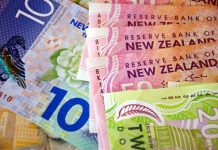The US government didn’t shut down yesterday, as US policymakers agreed on a short-term funding deal that will keep the lights on until November 17th. But the new deal excludes any new aid package for Ukraine – which is a key demand from Democrats. Therefore, the political headache in the US is not over, but the politicians bought themselves a couple of weeks to try to find a better solution.
Bitcoin rallied and US equity futures gained in Asia hinting at improved appetite after the S&P500 recorded its 4th straight week of losses last week, and a nearly 5% fall in September. Investors didn’t flock into the US Treasuries following the US no-shutdown news, however. The US 10-year yield opened the week above 4.60% and pushed marginally higher, whereas the 2-year yield rebounded, after getting closer to the 5% mark after Friday’s PCE index showed slower than expected inflation numbers. The fact that the rising gasoline prices start showing in inflation figures is not good news, yet melting US savings and student debt repayments should weigh on US spending. And if all goes according to the plan, a softer US spending could pull more pressure off of inflation and counter the positive impact of rising energy prices on overall inflation numbers. Futures market now give around 70% chance for another pause in FOMC’s November meeting.
Despite waning political tensions, the US dollar kicked off the week on a positive note. The Chinese official PMI rose above the 50 threshold; the Caixin numbers looked softer, but remained in the expansion zone. The Japanese tankan survey showed that confidence among big manufacturers improved for a second month. The Nikkei was better bid this morning, as the USJDPY came a notch closer to the 150 mark. In the Eurozone, last Friday’s inflation figures enchanted investors and the European Central Bank (ECB) doves. Both headline and core inflation fell more than expected. Core inflation fell to 4.5%, a year low. We are still more than twice the ECB’s 2% inflation goal, and the rising energy prices and weakening euro make the path uncertain for the coming months but if the Fed is done hiking, the ECB is certainly done hiking as well. The Stoxx 600 jumped following an encouraging fall in inflation, but gains remained short-lived, appetite in European real estate and luxury brands remain limited and a slide below the 445 level is still my base case scenario. In currency, the softening ECB expectations should keep the euro bears in play, but a potential weakness in the US dollar on political relief could help the euro recover recent losses.
In the commodity space, gold feels like it’s tied to a stone and thrown into the sea. The price of an ounce is now below $1950. Oversold market conditions hint that we should soon see a pause and correction, but the US yields look appetizing and a potential fall in the yields would make the stocks appetizing leaving little room for gold to make a comeback. In energy, the crude rally is losing steam above the $90pb. OPEC+ will meet this week. No changes are expected to the outlook policy, the rising demand and falling supply continue to support higher oil prices. Even the Russian oil which is supposed to be capped at $60pb is advancing decidedly toward the $100 level.













